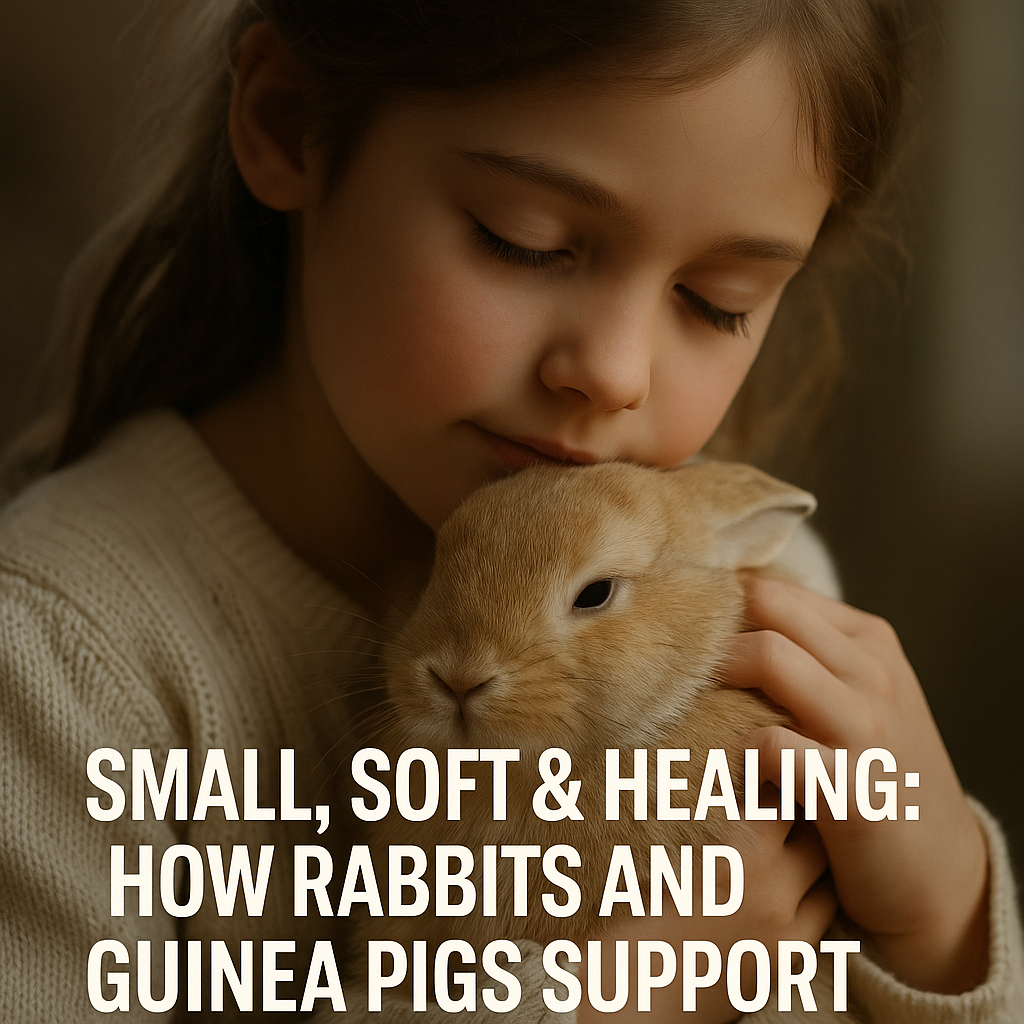In the world of animal-assisted therapy, most people immediately think of dogs or horses. But there’s a growing appreciation for the quiet heroes of emotional support: rabbits and guinea pigs.
These gentle, low-maintenance animals are making a significant difference in the lives of children with anxiety, emotional disorders, and learning difficulties. With their soft fur, calming energy, and non-threatening nature, they offer a safe and soothing form of connection—especially for kids who struggle with verbal expression or social interaction.
Why Small Animals?
Unlike larger animals, rabbits and guinea pigs are quiet, easy to care for, and non-intimidating. For children who may be afraid of dogs or overwhelmed by sensory input, these small creatures offer a peaceful introduction to emotional bonding.
1. Soothing Presence
Their calm movements and soft bodies help regulate a child’s nervous system. Simply petting a rabbit or listening to the quiet sounds of a guinea pig munching hay can provide emotional grounding.
2. Perfect for Indoor Therapy
Because of their size, these animals are ideal for classrooms, therapy rooms, or even small apartments—bringing therapy to children who may not have access to larger facilities.
3. Safe and Approachable
They rarely bark, scratch, or bite. Their docile personalities make them perfect companions for kids with sensory sensitivities or emotional trauma.
The Science Behind the Fur
Interacting with animals—big or small—has been shown to:
- Lower cortisol (stress hormone)
- Increase oxytocin (the bonding hormone)
- Reduce symptoms of anxiety and depression
- Improve emotional regulation
But with small therapy animals, there’s the added benefit of tactile stimulation. The repetitive act of stroking soft fur, feeling gentle breathing, or listening to tiny squeaks helps children stay present and calm.
Helping Children with Anxiety and Emotional Disorders
Children with anxiety or emotional disorders often face:
- Difficulty expressing feelings
- Trouble with social interaction
- Low self-esteem
- Physical symptoms like restlessness or fatigue
Rabbits and guinea pigs offer a non-verbal, judgment-free interaction that fosters trust and empathy. Therapists use these interactions to teach:
- Mindfulness
- Emotional labeling
- Responsibility
- Patience
Real-Life Example
In a therapeutic school in the UK, teachers introduced guinea pigs into the classroom for students with emotional and behavioral difficulties. Within weeks, children became more focused, less aggressive, and even started helping each other care for the animals. The presence of the guinea pigs gave them something to care for—and a reason to care.
Emotional Support at Home
You don’t have to be in a formal therapy setting to experience the healing benefits of small animals.
Many parents of children with social anxiety or trauma report incredible changes after bringing a pet rabbit or guinea pig into their home. These animals encourage:
- Routine (feeding, cleaning, playing)
- Gentle interaction
- Emotional vocabulary (children talking to the animal, describing their feelings)
Over time, kids begin to show improved emotional awareness, reduced tantrums, and greater interest in social situations.
Important Considerations
Although small animals are wonderful companions, they still require commitment and care.
Here’s what to keep in mind:
- 🐾 They need regular cleaning, proper housing, and vet visits
- 🐾 They are sensitive to loud noises and handling
- 🐾 Children should be taught gentle and respectful interaction
- 🐾 Adult supervision is important to ensure the animal’s well-being
Schools and Therapy Programs Are Taking Notice
More and more schools and therapy centers are incorporating animal-assisted activities with small pets. These programs offer:
- Classroom pets for emotional learning
- Reading sessions with rabbits (to boost literacy and reduce anxiety)
- Calm corners with small animal enclosures for emotional regulation
Therapists note that just 15 minutes of interaction can significantly improve mood and focus—especially in children with ADHD, anxiety, or attachment issues.
A Gentle Path to Emotional Growth
While rabbits and guinea pigs may not fetch the spotlight like dogs or horses, their impact is just as profound—especially for the most vulnerable children. They teach that healing doesn’t always need to be loud or dramatic. Sometimes, healing comes in the form of a soft nose nuzzling your hand, or a tiny heartbeat resting gently against your chest.
Final Thoughts
In a noisy, fast-moving world, these small animals offer a slower, quieter kind of therapy—one that is ideal for children navigating the complexities of anxiety and emotional development.
For families, educators, or therapists seeking gentle emotional support tools, rabbits and guinea pigs can be a beautiful starting point. They remind us that sometimes, the smallest companions leave the biggest impact on our hearts.
